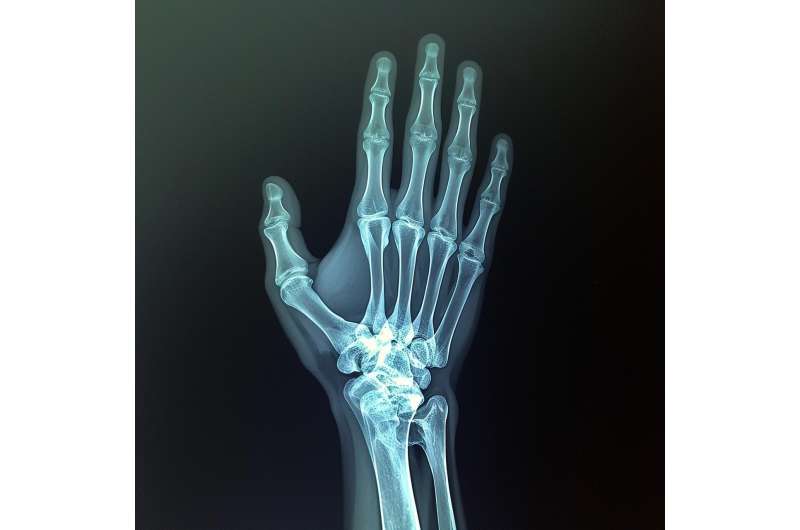This article has been reviewed according to Science X's editorial process and policies. Editors have highlighted the following attributes while ensuring the content's credibility:
fact-checked
trusted source
proofread
Study provides guidelines to doctors for individual treatment of wrist fractures

A doctoral thesis by Viktor Schmidt, Umeå University can hopefully help doctors to provide better information to patients after wrist fractures. It can determine which treatment is most appropriate for each individual patient.
The thesis shows that the alignment in which a wrist fracture heals in is important in terms of early results (1 year after the injury). After that, there is a continued gradual recovery, and a decade after the injury, most patients are fully recovered in function, regardless of the alignment in which the fracture healed. By identifying unstable fractures and following guidelines that promote early surgery, short-term outcomes are likely to improve.
A broken wrist, or distal radius fracture as it is called in technical terms, is the most common skeletal injury. A well-functioning wrist is important to be able to work and engage in activities of daily living. Treatment after such an injury is aimed at restoring function by recreating anatomical alignment and providing the patient with adequate rehabilitation.
The first study examined results one year after injury.
"We could see a correlation where malalignments led to poorer results in terms of range of motion, grip strength and self-rated problems," says Schmidt, Department of Diagnostics and Intervention.
The second work analyzed whether a continued movement in the skeletal injury between emergency room visits and return visits had any impact on stability.
"We found that this movement, which we have chosen to call 'marginal secondary displacement,' is an important parameter to take into account in order for the skeletal injury to heal in a good position."
The third study followed up on the patients from the first study, a decade later. It showed that the results continue to improve over time and that after more than a decade, the patients were restored in terms of range of motion, grip strength and self-reported outcomes, regardless of the position in which the bone injury had healed. The final study investigated the potential consequences of the fast tracks introduced in the Swedish national guidelines of distal radius fractures.
"We compared the treatment that was given with how they would have been treated if the guidelines had been followed. We found that if the fast-track program had been followed, more patients would have been treated with early surgery and a delayed operation could have been avoided in the majority of cases," says Schmidt, who defends his thesis on May 8.





















